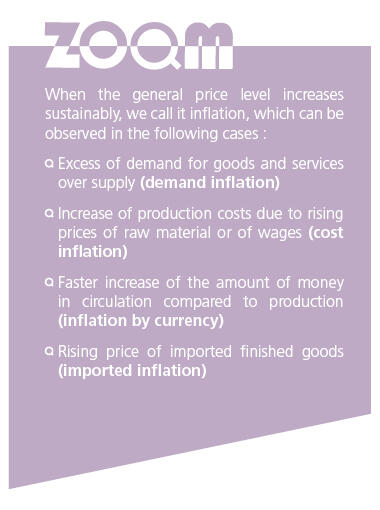Monetary policy
Like all central banks, one of the main tasks of Bank Al-Maghrib is to develop and conduct monetary policy. Monetary policy refers to all the decisions taken by the Bank with the ultimate goal of preserving price stability.
What is price stability?
Price stability does not mean that prices of all goods remain unchanged, but that the general price level is stable. The latter is calculated using the consumer price index (CPI), which measures the price change in the basket of goods and services of an average household. For example, price of food, transportation, or housing.

Note! Any rise in prices is not synonymous with inflation.
Prices of some goods may increase for an extended period of time, as a result of progress and of improvements made to these goods, without necessarily causing inflation.

|

|
How does BAM handle this?
To ensure price stability, Bank Al-Maghrib uses various national and international monetary and economic indicators to analyze the price rise in the economy and its impact. Monetary policy decisions are made and implemented through sophisticated mechanisms of monitoring, analysis and forecasting. The main monetary policy instrument is the key rate, at which the central bank lends money to banks. This rate determines the rates in other markets.
Thus, any increase in the key rate leads to a rise in the rates charged by banks on their customers, which results in a higher credit cost. Consequently, demand for loans*decreases, which leads to the drop of consumptions and investments financed by these loans. As a result, the supply of goods and services exceeds the demand, hence, prices fall.
Conversely, a drop in the key rate implies a lower cost of credit. In this case, consumption and investment increase, hence a rise in prices and therefore in the inflation rate too.
For more information :

